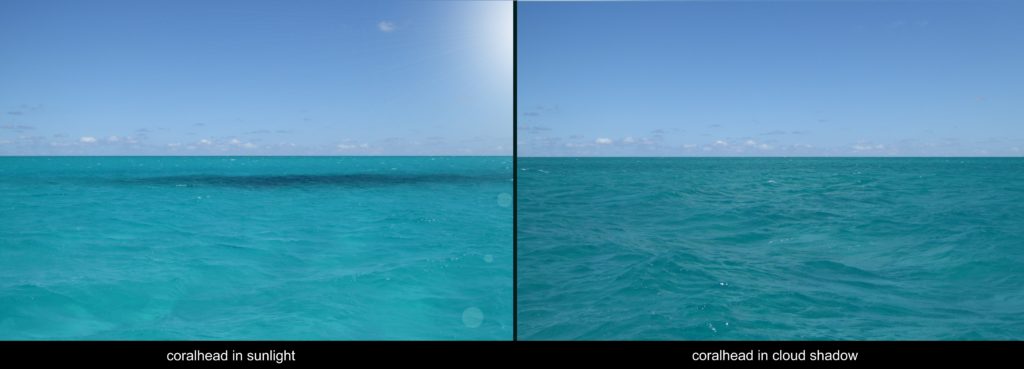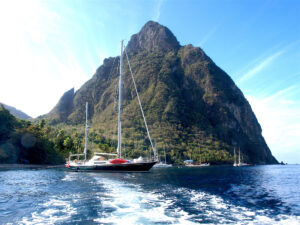
The good ketch Silverheels and I cleared St. Johns River Inlet in north Florida and headed southeast in search of some easy time in the Exumas. From the start, we were jumping through transient weather windows as fast as they opened: one chance to cross the Gulf Stream to the Abacos before strong head winds settled in; a single sail-worthy day to transit Tongue of the Ocean ahead of a cold front; and in the wake of that blow, just one fair breeze to get across the Middle Ground banks to the top of the Exumas before the wind turned contrary for the next two weeks. That happened to fall on the winter solstice, the shortest day of the year. It turned out to be my longest shortest day ever.
The Bahamas’ vast Middle Ground and its neighbor, the Yellow Bank, span nearly 1,000 square miles of swimming-pool clear water over white sand, peppered with hundreds of coral heads, many shallow enough to ground an unwary boat and every one of them tough enough to sink her. Looking back on it now, attempting that crossing in choppy conditions, with the sun at its lowest possible declination and dead ahead in my eyes at midday as we continued southeast, was probably not this skipper’s best call.
I have experience reading tropical waters and had crossed these banks before. I know how vital good lighting is. This was a clear day, but the sun’s angle was wrong. So I reefed down to jib and jigger to slow our progress and give the sun time to move at least a little west of center, marginally improving its slant. It worked. When the first heads began appearing — amorphous brown-black splotches defined against a blue-white background — I could see them far enough ahead to easily navigate around them. I even hoisted the mainsail again, mindful of having to beat the early sunset into port that evening.
All went well for the first hour or so. Then, just as we were weaving through what had to be the thickest concentration of coral heads on the entire banks, an errant train of slow-moving cauliflower-shaped clouds began blotting out the sun in turns, each for minutes at a time — minutes that stretched for eternities! Without sunlight, the sea’s surface instantly lost its transparency, instead reflecting a uniform, leaden sheen. I could no longer read the water or see the coral heads in our path and all around us to avoid them, and they were coming fast!
Time and again I luffed Silverheels into the wind, stalling for time, desperately willing the sun to return. Every time it peeked through, we progressed a little, all the while searching for another gap where we might ride out the next cloud shadow. Once, as we were rounding up, I glimpsed a huge head sliding past a foot or two beneath the surface and scant yards away, right where we would’ve been had I not turned when I did. Intuition? Skill? Dumb luck? Take your pick. It was a hairy afternoon out there on the Middle Ground.
The last cloud eventually passed, the sun returned to a clear sky and, as we covered the remaining miles, the thinning coral heads were plain to see. We made harbor in time to toast the sunset with a shot of good Barbados rum, grateful to have the banks behind us and the entire Exumas island chain stretched out ahead. Now we’re done hurrying, back in cruising mode, and it’s that much sweeter for the effort it took to get here. — Tor Pinney








